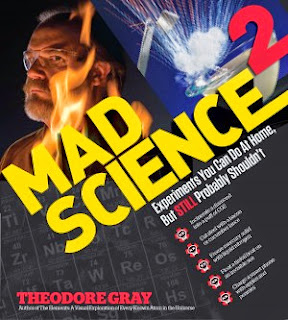Mad Science 2 shares some really interesting science experiments that I know will grab the attention of a lot of my students. Some examples that I think will get the biggest reaction from students are:
- How to cut steel by using bacon
- Charging an iPhone/iPod with apples & pennies
- Creating flammable bubble mix
- Floating tinfoil boats in an invisible pool
Coolness factor aside, the first thing that I appreciated about this book was that there are 4 full pages dedicated to the importance of safety in science. These notices are written in way that is very student friendly but also clear and easy to understand. For example, "Nearly every experiment in this book has the potential to blind you. You have only two eyes, and they're close to each other: One splash of acid, and you're shopping for a cane."
Another thing that I like about this book is that is has the power to peak my student's interests and get them excited about science, but it isn't a full instruction book that they can copy step-by-step. In fact, there isn't one experiment in the book that can tell you exactly how to complete the experiment fully. This means that my students will be required to think scientifically and critically about the situation before they can even begin thinking about ever attempting it themselves.
This book is now a part of my classroom library for students to read as well as for me to utilize formally in lessons. Some ways I plan on using this book include:
- Use the experiment ideas to introduce a new idea, lesson, unit and peak
my student's interests/curiosity
- Ask students to design a formal plan for one of the experiments as a way
to practice the scientific method
- Physically carry out some of the experiment ideas in the classroom
- Utilize the experiments to inspire student-lead projects
- Simply having science related reading material in the classroom
The author, Theodore Gray, has a strong online presence and can be followed through various social medias:
- His website, The Photographic Periodic Table, is also a great resource for
both teachers and students!


YAYAYAYAYAYAYAYYYY!! Thank you sooooo much for linking up with me. This is PERFECT!!! :)
ReplyDeleteNo problem! Glad it fits in with you linky party; it is a great idea :)
Delete